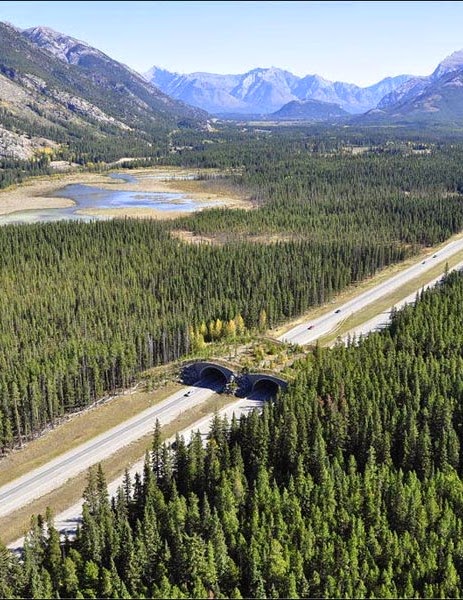-001.jpg)


Wildlife crossing structures, over and under highways, are found in Europe, the United States and in Banff National Park, here in Canada. They were built to alleviate the fragmentation of populations created by the Trans-Canada Highway, which dissects the Park. Until recently, research has failed to establish whether or not they actually work. But a new study of black bears and grizzly bears by Dr. Michael Sawaya from the Western Transportation Institute at Montana State University has demonstrated that the crossings are effective in providing genetic connectivity on both sides of the highway. DNA samples from hair traps in the general population were matched with samples at 20 crossings, to demonstrate that black bears and grizzly bears were using the crossings and successfully mating on the other side of the road.

Wildlife crossings are structures that allow animals to cross human-made barriers safely. Wildlife crossings may include: underpass tunnels, viaducts, and overpasses (mainly for large or herd-type animals); amphibian tunnels; fish ladders; tunnels and culverts (for small mammals such as otters, hedgehogs, and badgers); green roofs (for butterflies and birds).

Wildlife crossings are a practice in habitat conservation, allowing connections or reconnections between habitats, combating habitat fragmentation. They also assist in avoiding collisions between vehicles and animals, which in addition to killing or injuring wildlife may cause injury to humans and property damage.